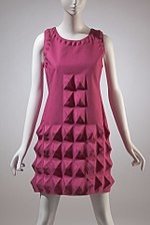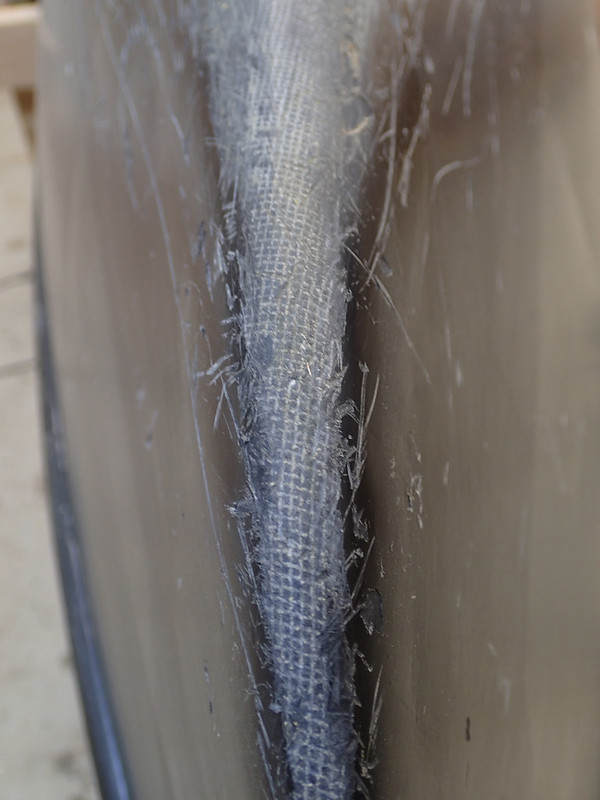Mike, I'll wait to see what your experiments show with the sleeve material before I buy the dynel fabric by the yard. I'm not really interested in a material that I cant smooth out on the edges though, I don't like the protruding skid plates, everything needs to be smooth and fair. I'm afraid I'd have to sand through those edges anyway but I'll wait to see what you find out. Not having to cut strips or messing with frayed edges sounds appealing, and I'm sure the sleeve material already acts like bias cut cloth, so it should conform to the stems quite well.
Mark, I have high hopes that using the hard roller (repeatedly) atop peel ply will knock down the folded edges of that Dynel sleeve to near flush invisibility. The selvage edge in tapes stands very tall (and kinda sharp) once epoxied without peel ply compression; with the hard roller that selvage edge vanishes.
I am likewise thinking the sleeve will be bias woven, which should help it conform to a vee and stem curve.
The annoying thing about trying to get this stuff to fair in with the stems is that when you sand into it or use a scraper on it, then put a layer of epoxy over it, the fabric expands out again and is all rough. Varnish or paint doesn't seem to do the same thing. The dynel does wear through eventually. My real world experience is that 4 months of daily usage in abrasive shield rock conditions with frequent landings for portages will take the xynole out.
Not to keep singing the praises of Dynel fabric, and I have never worked with Xynole, but once the Dynel is epoxy saturated and peel ply compressed it never expands or swells again, even with 60 grit RO sanding and epoxy recoating.
I know from the skid plate materials test that 5oz Dynel saturates thoroughly and completely from top to bottom. The thicker/heavier materials in that test- 8oz E-glass, kevlar felt, kevlar tape, even thick carbon fiber – revealed resin starvation on the bottom. (Photos post #21. The underside of the kevlar felt, which was the most horribly resin starved, Post 16)
http://www.canoetripping.net/forums...late-test-materials-impact-resistance-results
If you go with the Dynel fabric or Dynel sleeve as skid plate material I’ll be curious about the durability on shield rock compared to Xynole. If I am happy with the result on a decked canoe or two it
will be going on those sea kayaks this spring, and that will be another acid test.
Doing a long vee skid plate or full vee bottom would be much easier with a linear material that doesn’t fray along the edges. And at $1 a yard laying down very long strips the sleeve would be as cost effective as buying a yard of Dynel fabric and cutting it into thin strips; one yard of 54” Dynel = $10. Ten yards of Dynel sleeve = $10
Jeeze Louise I hope it works. I am so psyched to try using the Dynel sleeve that I’m taking the four canoes currently EX-Poxy curing in the shop outside in a couple of days and in hopes of a short delivery time on the order of Dynel sleeve.
Psyched, and I’d rather do epoxy and paint work before the dead of winter when it gets more costly to keep the shop toasty warm at least overnight.





